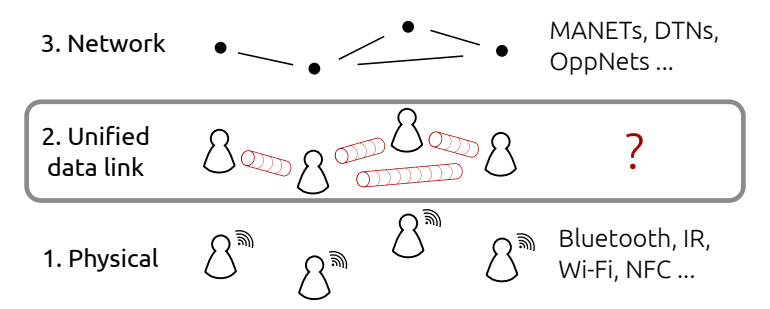This GitHub organisation aims at studying how to enable device-to-device communication between smartphones and desktop computers.
Each one of its repositories hosts a communication channel, leveraging a D2D technology such as Bluetooth; you'll also find an example application allowing file exchange between devices using channels of your choice.
There are lots of device-to-device technologies out there, ready to be used, such as Wi-Fi, NFC, Bluetooth etc; there are also lots of use-cases that could leverage those technologies, but we feel like something is missing in between.
To solve that problem, we propose the Venice framework, an abstraction layer that allows applications to manipulate communication technologies through the use of channels.
A channel is an object that encapsulates a device-to-device physical communication technology (Bluetooth or Wi-Fi, for instance), to send data from user A to user B.
This framework makes use of two different channel types, bootstrap channels and data channels. Bootstrap channels transmit metadata about communication exchanges and data channels (e.g. authentication data required to open a Wi-Fi connection); Data channels do have a greater throughput than bootstrap channels, and are typically intented to carry payload data between nodes.
- Bluetooth Low Energy: https://github.com/Venice-D2D/ble_bootstrap_channel
- QR code: https://github.com/Venice-D2D/qr_code_bootstrap_channel
- Wi-Fi (hotspot): https://github.com/Venice-D2D/wifi_data_channel
This organization includes a demonstration app that showcases all mentioned channels; it's located here: https://github.com/Venice-D2D/venice_demo_app.
Here is a video showing how channels can be leveraged to exchange data between two phones:
